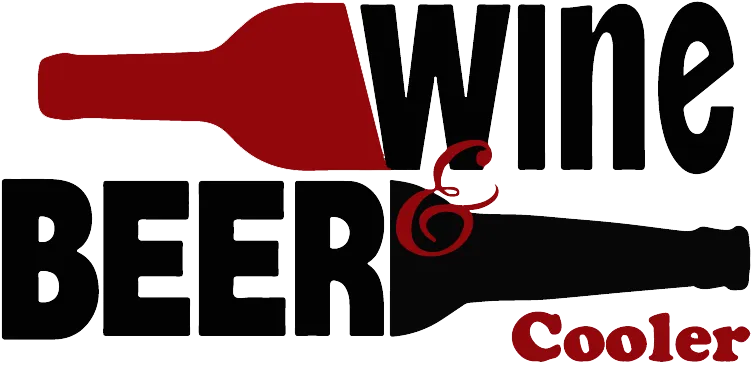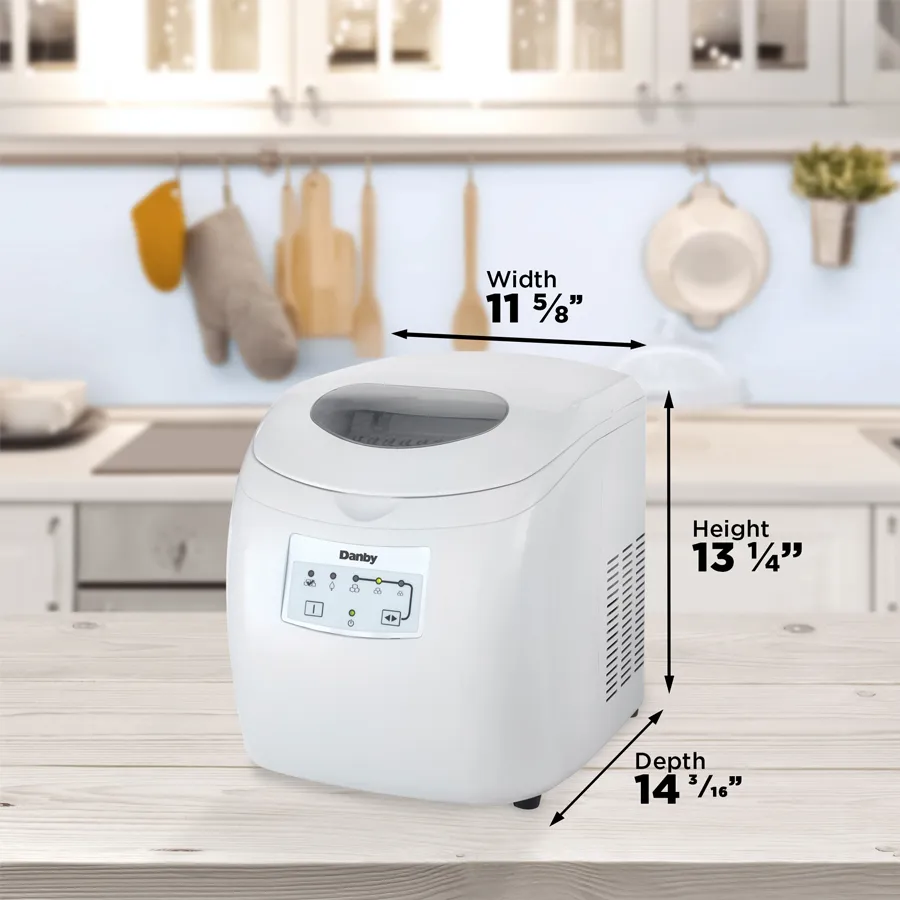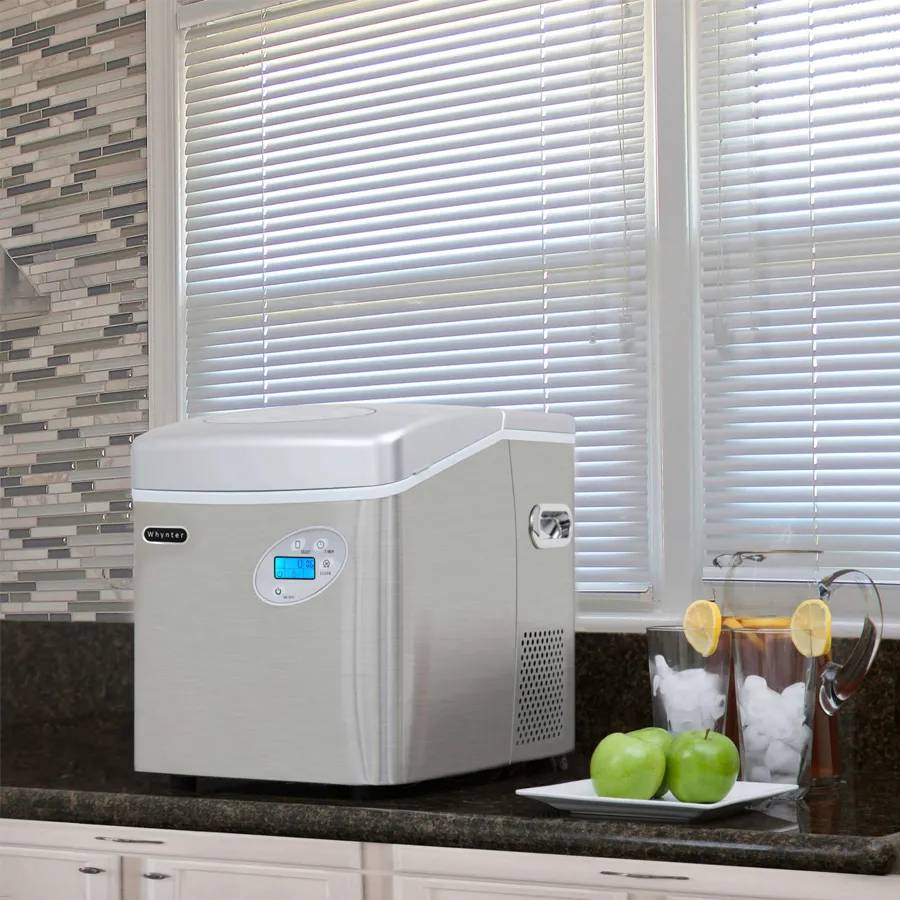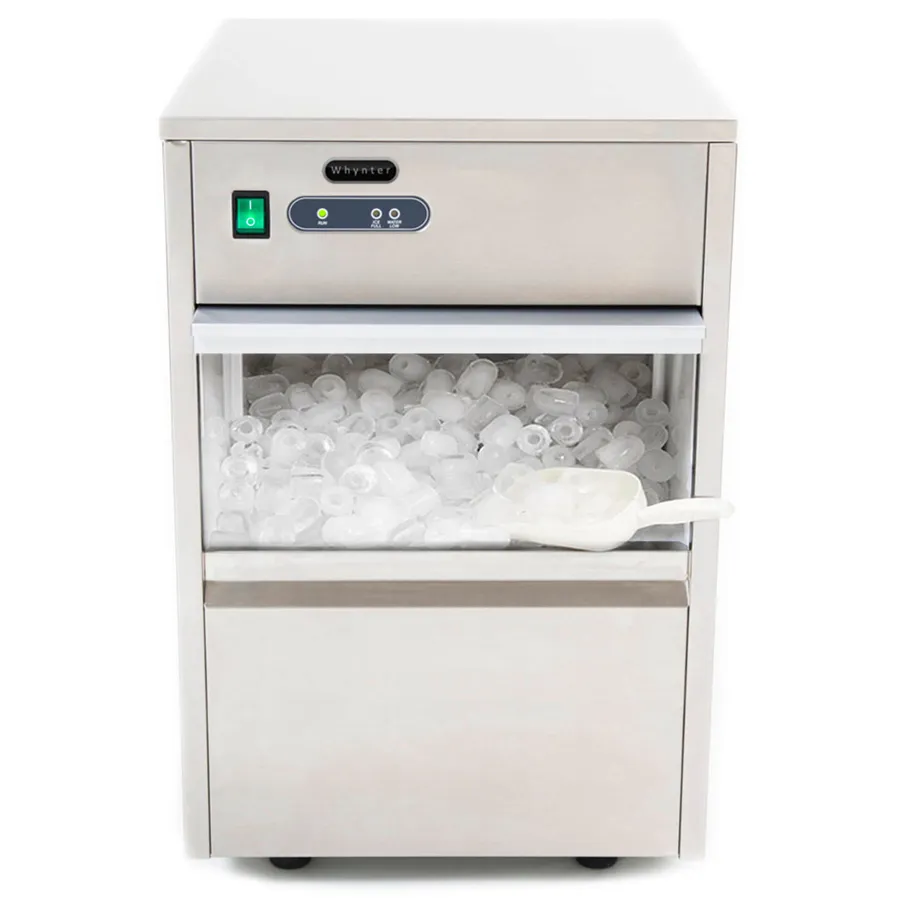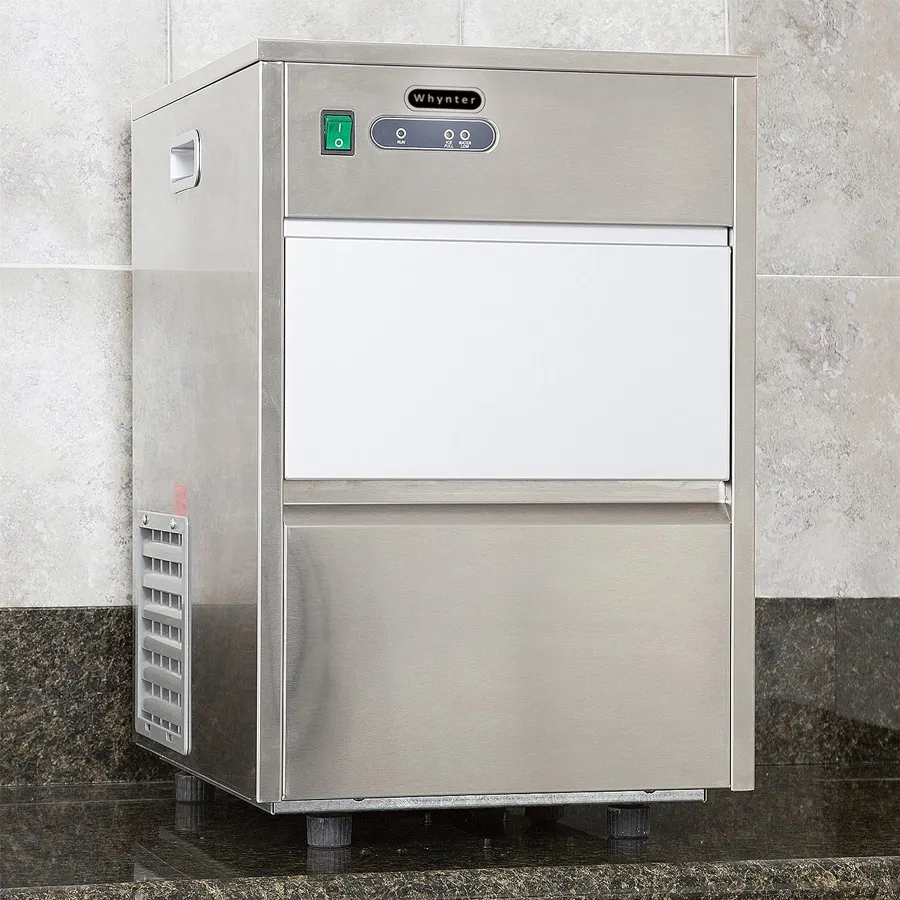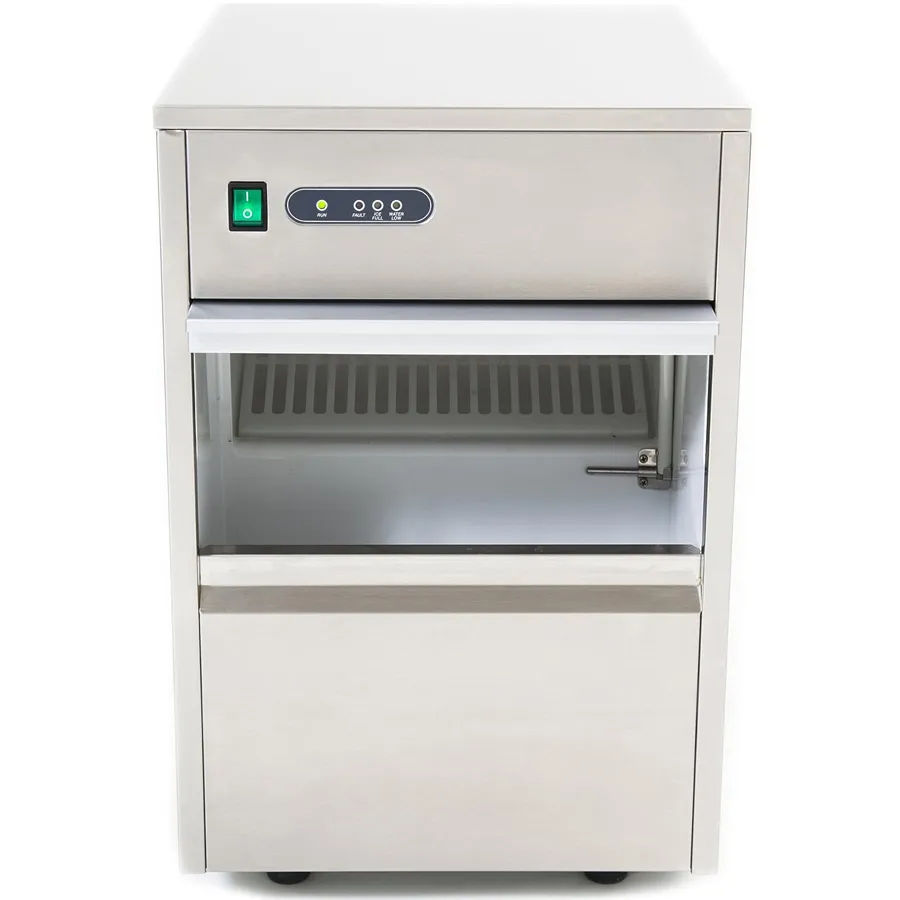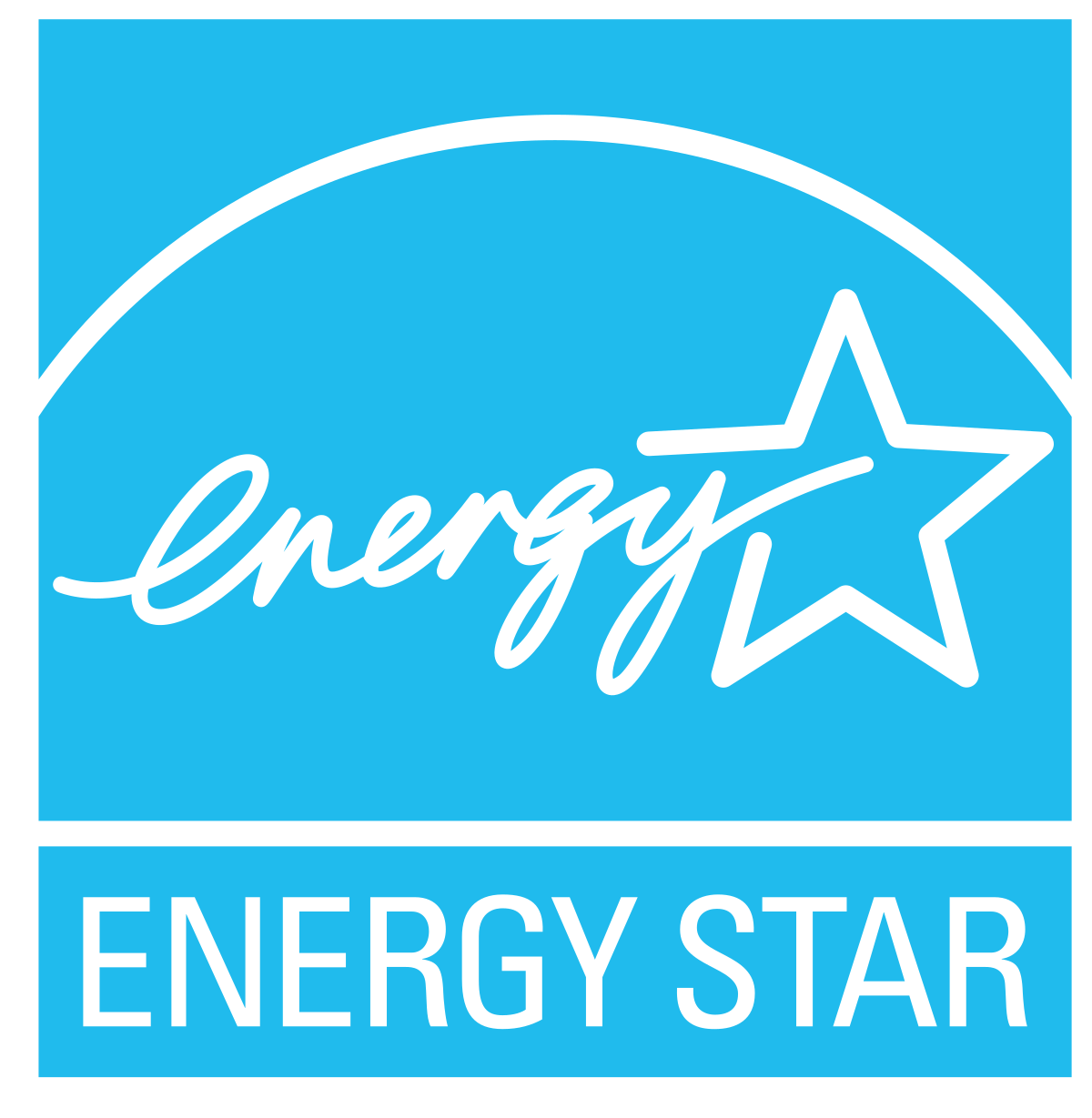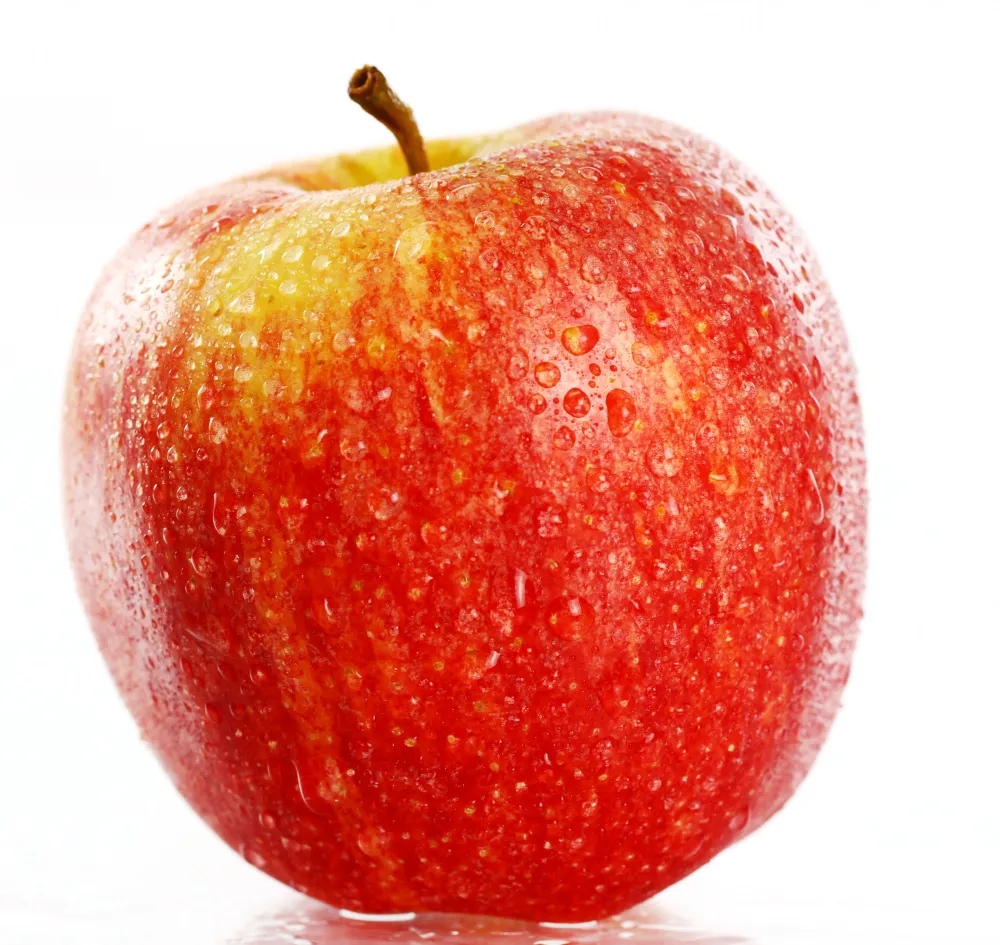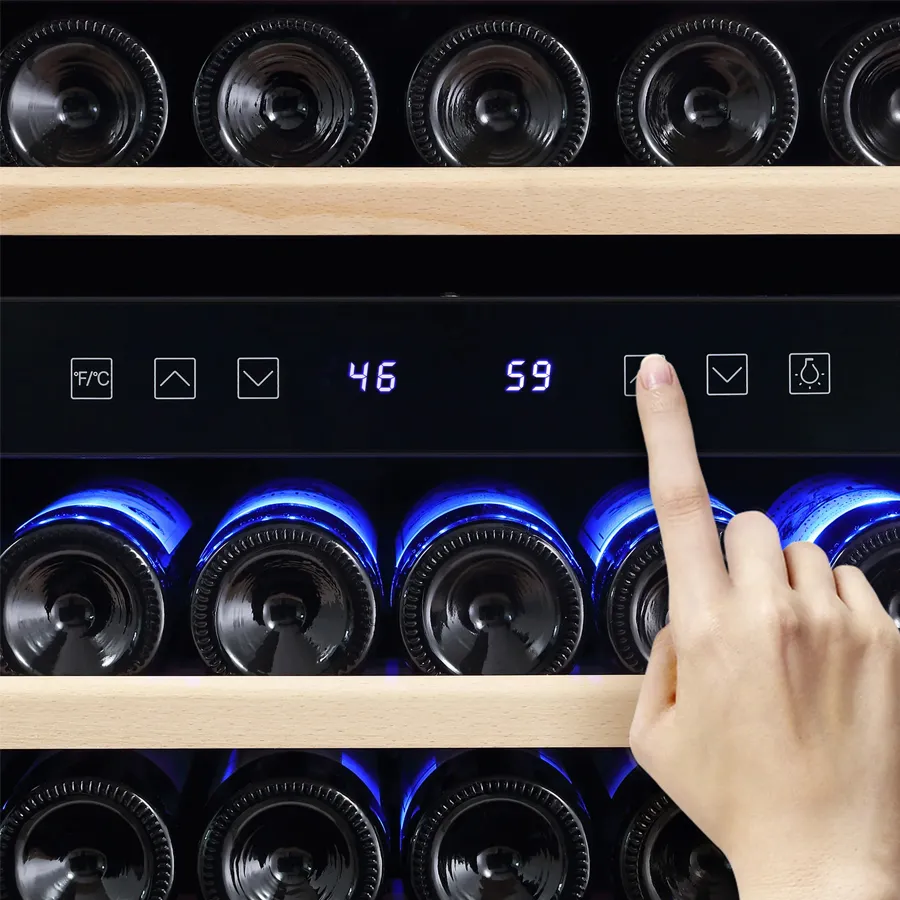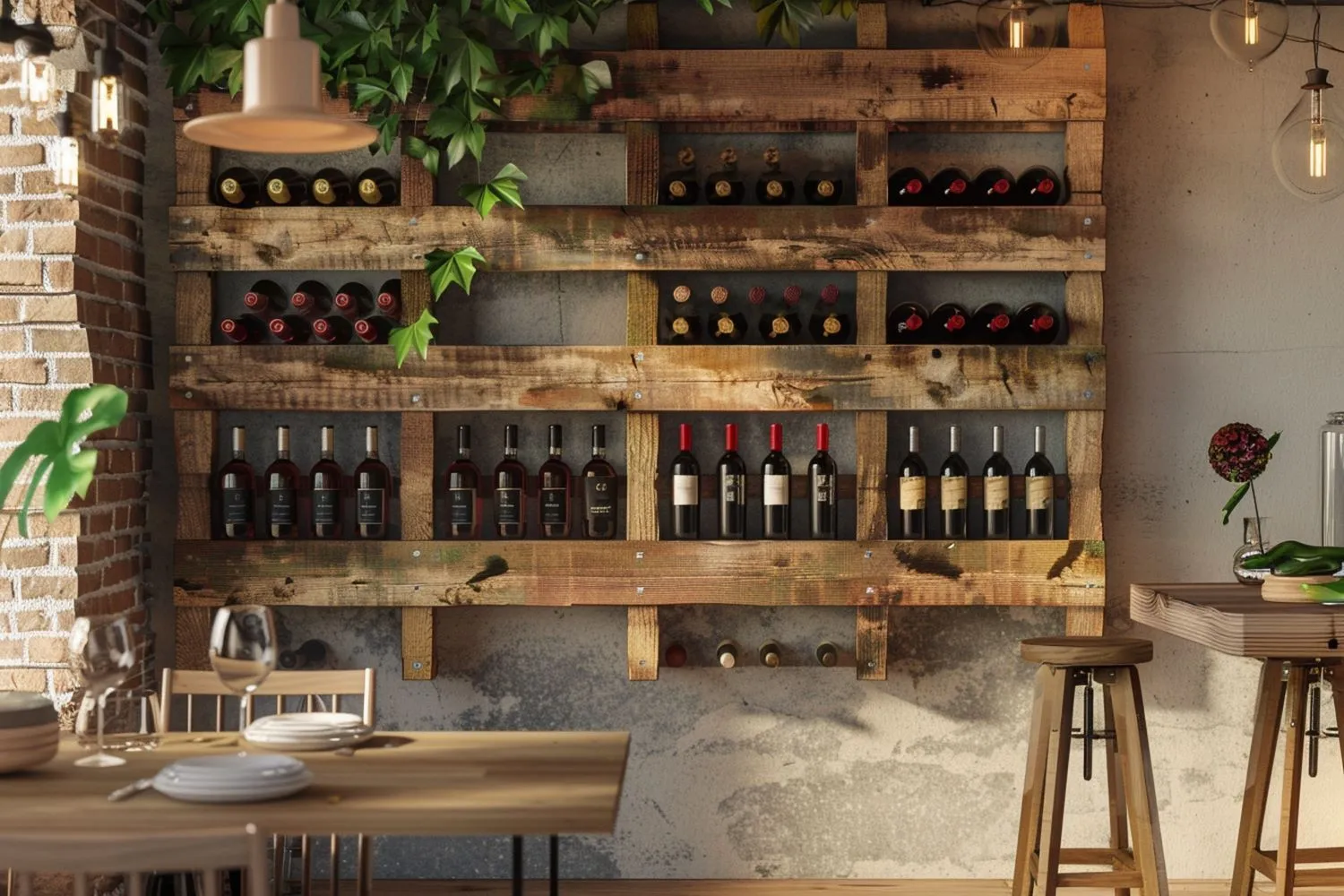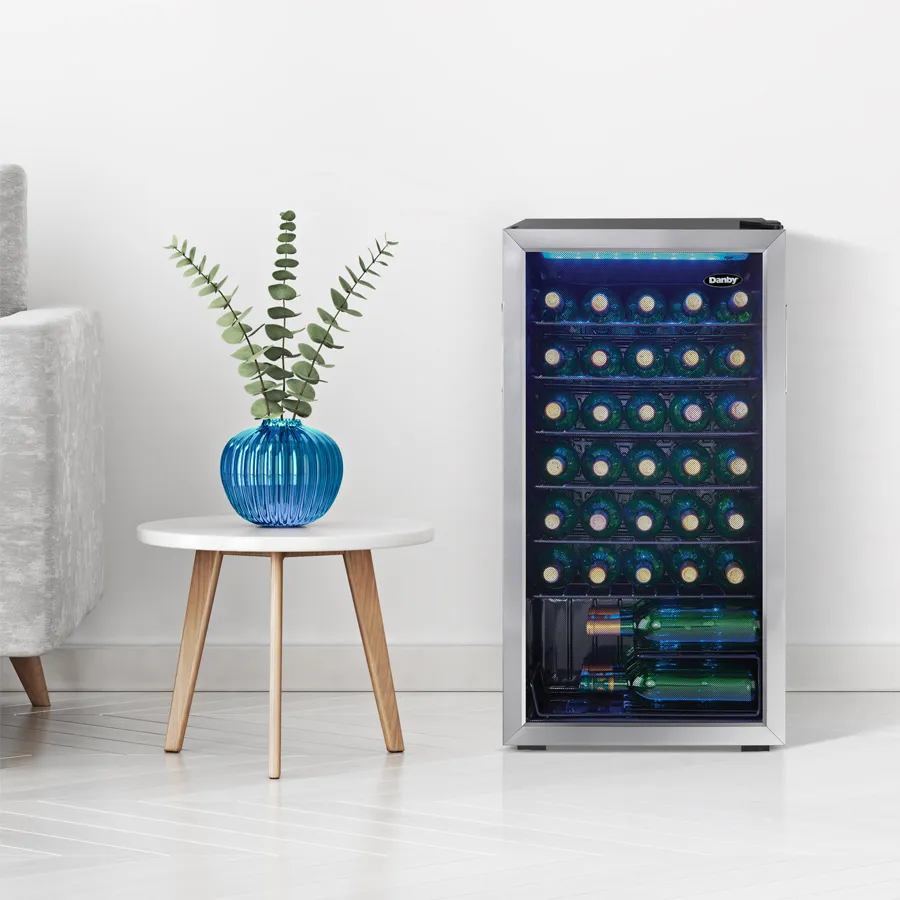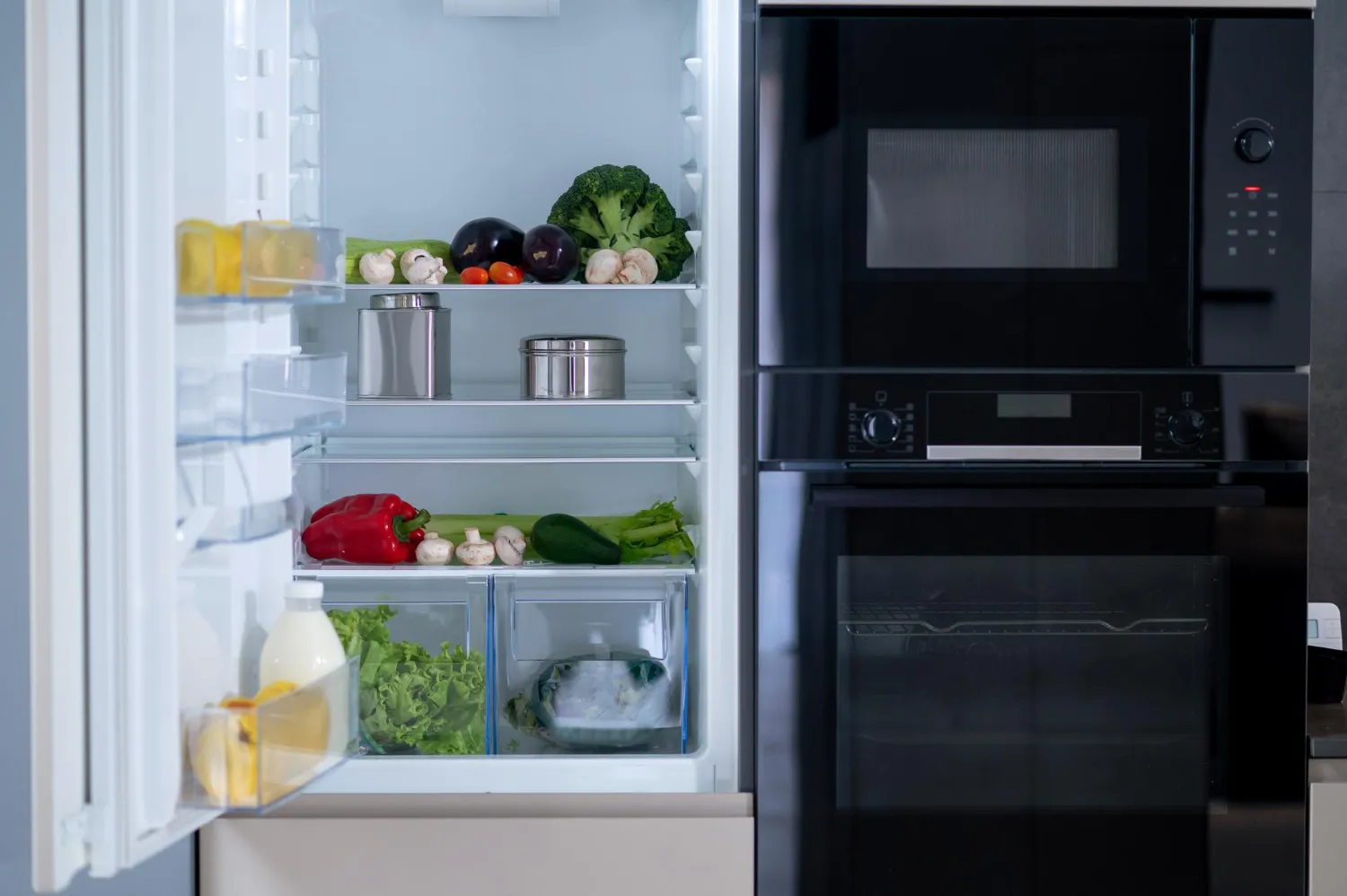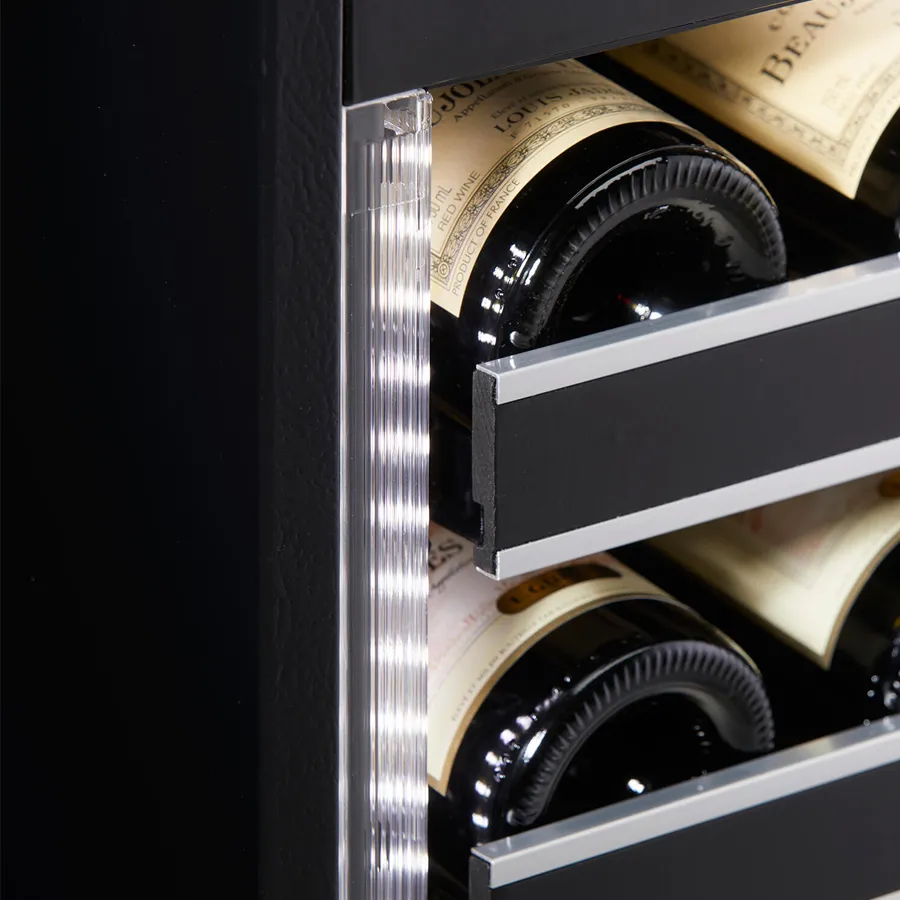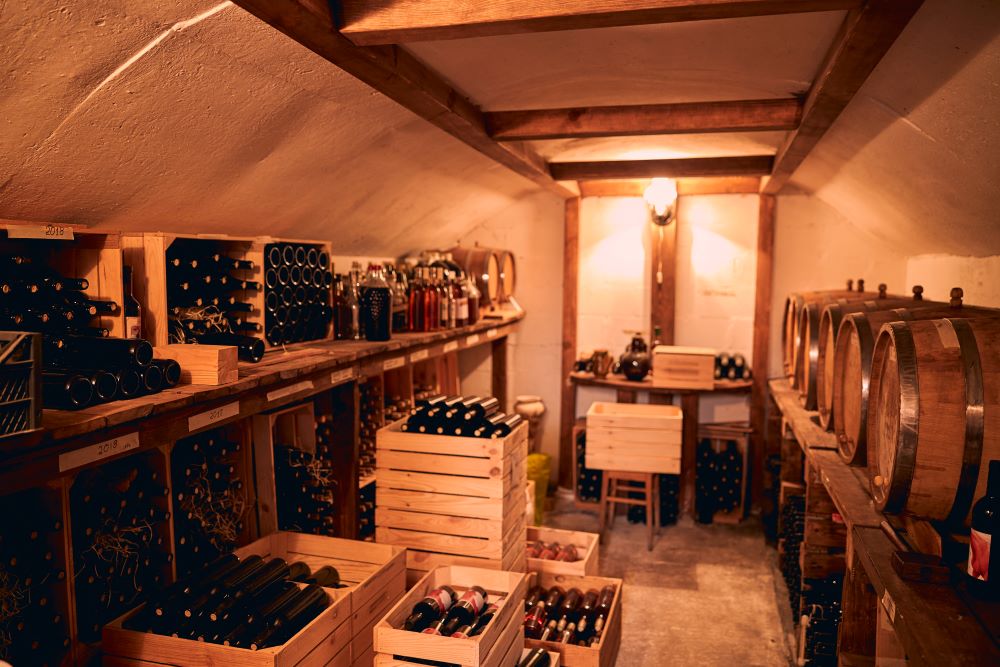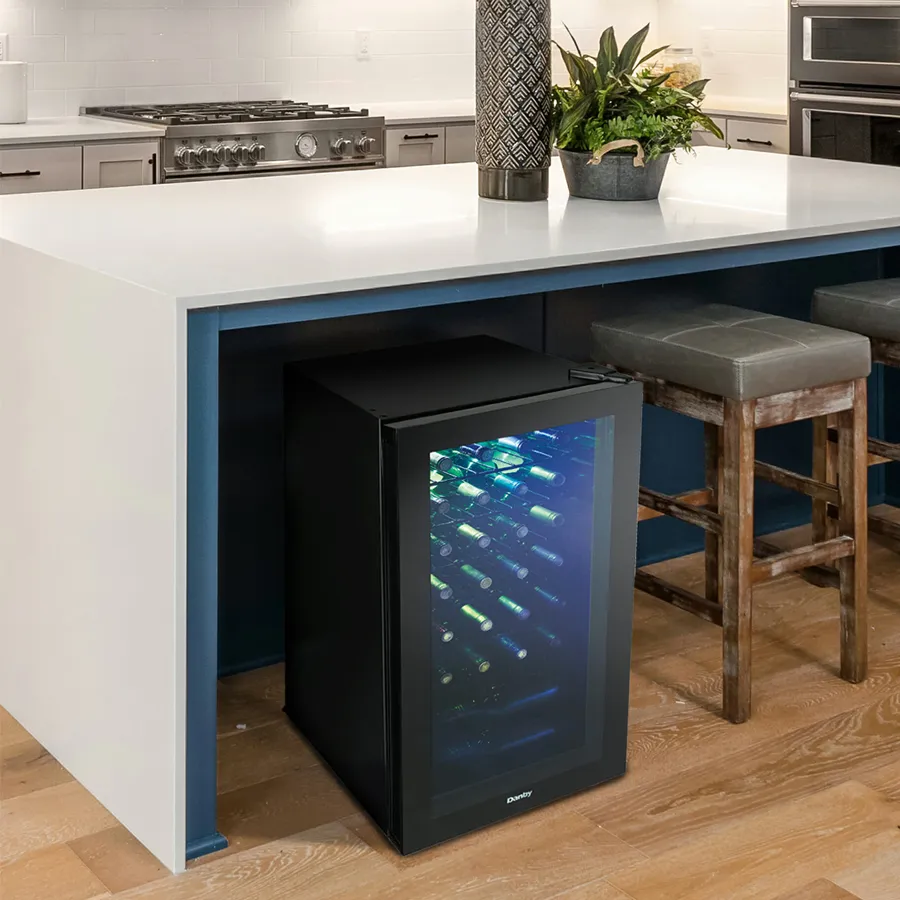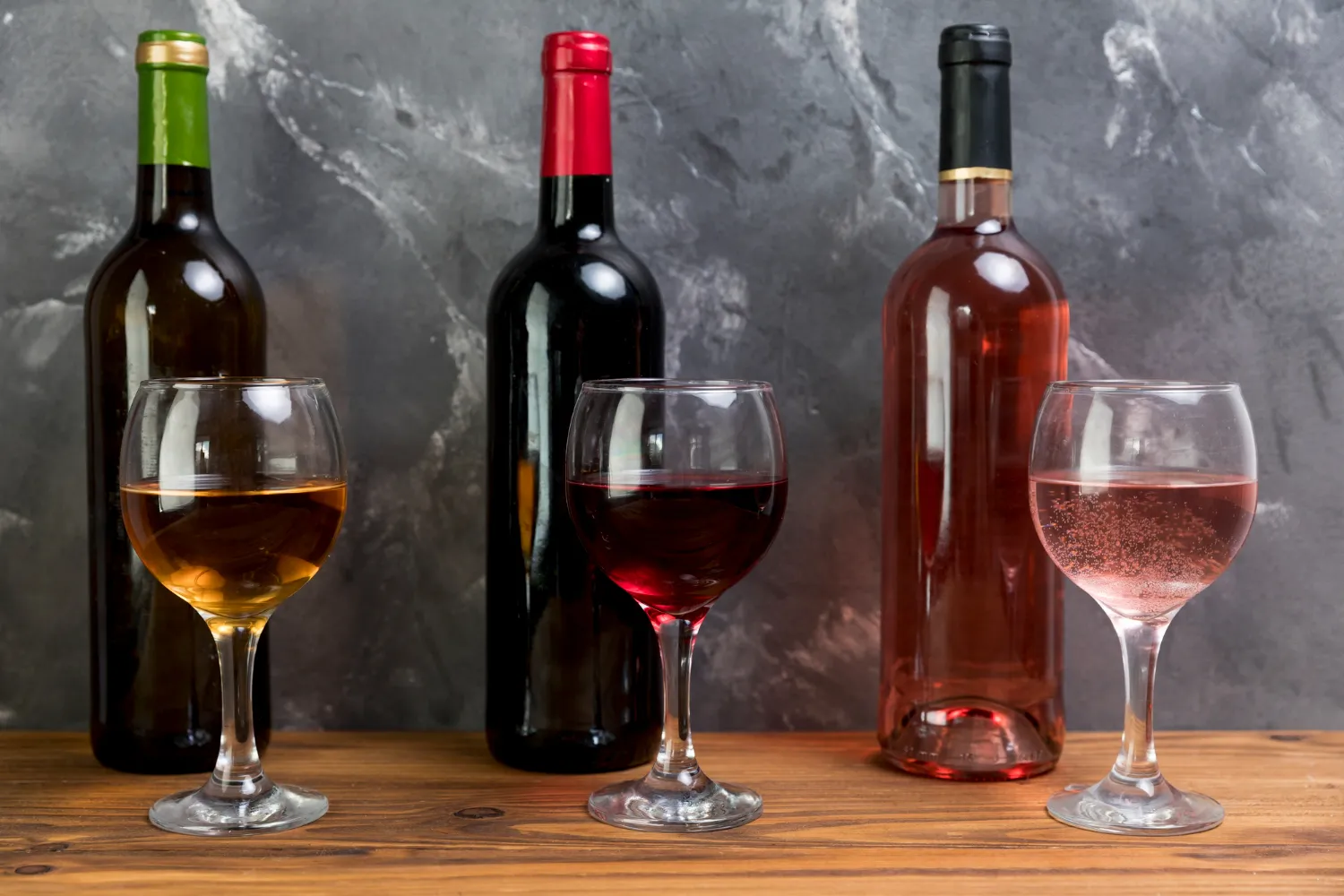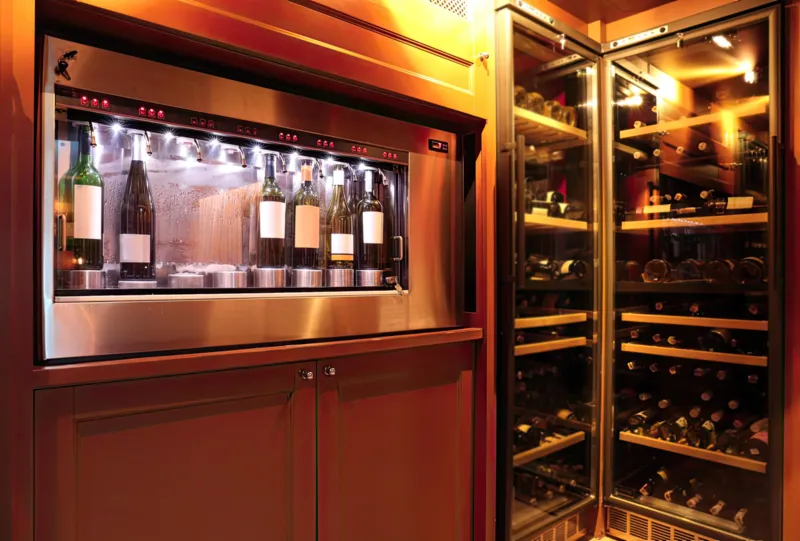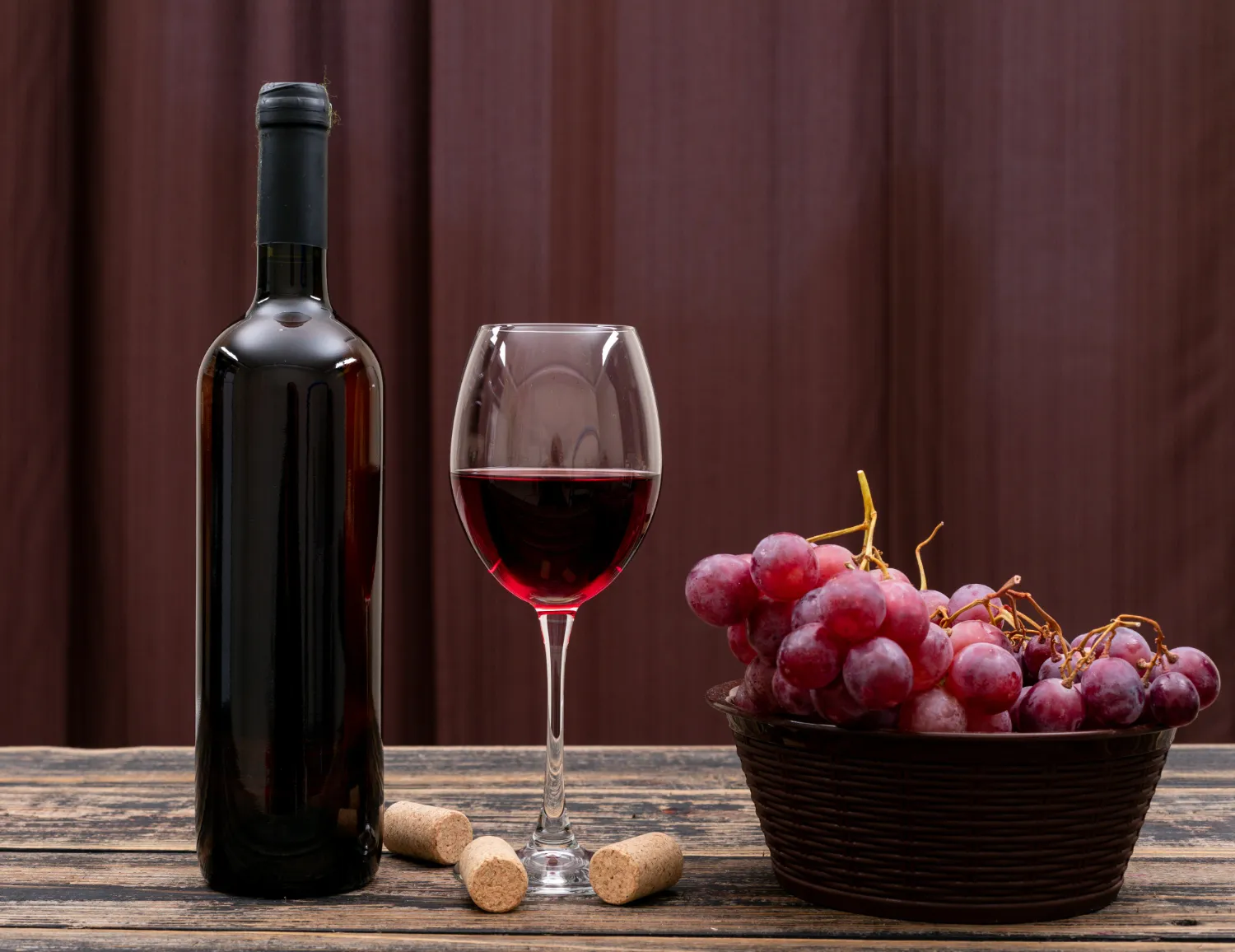Do you worry about the amount of power your commercial ice maker uses? To control energy use and save electricity bills, knowing how much power your ice maker consumes is essential. In this informative blog post, we will delve into the exact power consumption of ice makers, the potential dangers of excessive energy usage, and tips for optimizing the power consumption of your ice maker.
=> Quick Answer: Commercial ice machines Monthly energy use for an ice maker is approximately 350 kWh, which, at the average rate of $0.06 per kWh, would amount to approximately $21 in costs. Commercial ice makers are capable of producing significantly more ice than their residential counterparts. 500 lbs. of ice can be produced in a single day using a commercial ice machine.
Types of Ice Makers
Various ice makers are available on the market, each with power consumption, style, and application. Some of the most common types of ice makers include:
| 1. Portable Ice Makers | 4. Commercial Ice Makers |
| 2. Built-in and Undercounter Ice Makers | 5. Countertop Ice Makers |
| 3. Freestanding Ice Makers | 6. Ice Dispensers |
Portable Ice Makers
If you want to have an ice maker that can be easily transported or used in various locations, a portable ice maker may be the perfect choice for you. These compact machines are designed to produce ice quickly and efficiently, making them ideal for installation on RVs, small gatherings, outdoor events, or even camping trips. Despite their smaller size, portable ice makers can still produce a significant amount of ice quickly, providing you with a convenient source of ice wherever you go.
Built-In and Undercounter Ice Makers
Built-in and under-counter ice makers are perfect for those who want a permanent ice solution in their homes or businesses. These units are designed to fit seamlessly into your kitchen or bar, providing a continuous supply of ice without taking up valuable space. Built-in and under-counter ice makers are available in a range of sizes and styles, allowing you to choose the perfect option for your specific needs. With their convenient installation and reliable performance, these ice makers are a popular choice for many residential and commercial applications.

Those looking for a long-term solution for ice in their homes or workplaces can consider built-in or under-counter ice machines.
Commercial Ice Makers
Commercial ice makers are built to meet the high demands of restaurants, bars, hotels, and other businesses that require a large amount of ice daily. These units are capable of producing vast quantities of ice quickly and efficiently, ensuring that you never run out of ice during peak hours. Commercial ice makers come in various sizes and configurations to accommodate different needs, making them an essential piece of equipment for any business that relies on a constant supply of ice.
Factors That Affect Power Consumption
Ice Production Capacity Affects to Power Consumption
The ice production capacity of an ice maker refers to the amount of ice it can produce in a 24-hour period. The higher the ice production capacity, the more power the ice maker will consume. If you frequently need a large amount of ice, you may need to opt for a higher-capacity model, which will consume more power.
Energy Efficiency Label Ratings
Pay close attention to the energy efficiency ratings of ice makers when you’re thinking about how much power they use. Find models that have a high energy efficiency rating; these will use less power without sacrificing ice production. You can reduce your power use and costs over time by purchasing an energy-efficient ice machine.
Operating Environment and Temperature
The operating environment and temperature can also impact an ice maker’s power consumption. If you place your ice maker in a hot environment, it may need to work harder to produce ice, leading to higher power consumption. Additionally, the temperature of the water used to make ice can affect power consumption. The table below breaks down the impact of the operating environment and temperature on power consumption:
| Operating Environment and Temperature | Impact on Power Consumption |
|---|---|
| Hot environment | Higher power consumption |
| Cold environment | Lower power consumption |
| Temperature of water | Higher temperature may lead to higher power consumption |
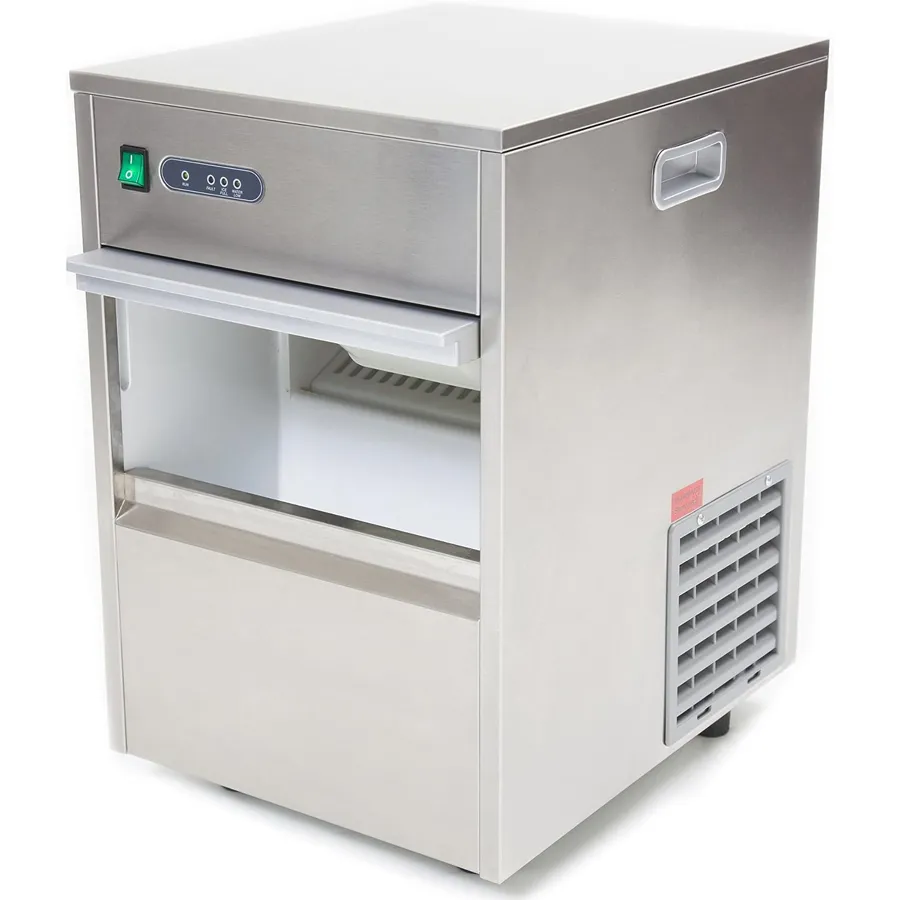
The power consumption of an ice maker can be affected by factors such as the temperature and operational environment.
Age and Condition:
The age and condition of an ice maker impact its energy efficiency. Older models often lack modern advancements, while wear and tear on components can increase energy consumption. Regular maintenance, including checking seals, cleaning coils, and ensuring proper calibration, is essential. Upgrading to energy-efficient models, especially those with certifications like Energy Star, can significantly reduce energy usage. Monitoring energy patterns and promptly addressing issues contribute to prolonged efficiency, minimizing environmental impact, and lowering energy bills.
About Energy Stars Certified of Ice Makers:
Knowing the energy efficiency rating of your ice maker, if you want to successfully reduce its energy use. Keep an eye out for energy-efficient wine coolers, denoted by labels like ENERGY STAR. Regulatory agencies provide these ratings so that consumers can make educated purchases of energy-efficient products. Investing in a wine cooler with a high energy efficiency rating is a win for your wallet and the planet.
=> You can learn more here: https://www.energystar.gov/products/how-product-earns-energy-star-label
Savings figures:
- ENERGY STAR-certified batch-type ice makers are about 10 percent more energy efficient and 20 percent more water efficient when compared with standard models
- ENERGY STAR-certified batch-type ice makers save businesses 700 kWh and $75 annually and $660 over the product’s lifetime on utility bills
- ENERGY STAR-certified continuous-type ice makers are about 16 percent more energy-efficient
- ENERGY STAR-certified continuous-type ice makers save businesses 1,350 kWh and $145 annually and $1,260 over the product’s lifetime on utility bills
Tips for Reducing Ice Maker Energy Consumption
There are a handful of easy things you can do to lower your ice maker’s power consumption. The first step in reducing the ice maker’s energy use is to move it to a cooler area, where the compressor won’t have to work as hard. You can make your ice maker work better and use less energy by cleaning the condenser coils and freezer compartment regularly. Using energy-efficient settings or modes on your ice maker, if available, can also help in reducing power consumption. Perceiving the energy-saving potential in your ice maker and actively taking steps to reduce its energy usage can make a significant impact on your overall power consumption.
- Optimal Temperature Settings: Ensure that your freezer and ice maker are set to the recommended temperature settings. Lowering the temperature excessively can increase energy consumption. Some modern refrigerators and ice makers have an energy-saving mode. Activate this mode if available, as it adjusts the appliance’s performance to reduce energy consumption. If you’re in the market for a new ice maker or refrigerator, consider models with high energy efficiency ratings. Energy Star-certified appliances are designed to consume less energy.
- Regular Maintenance: Keep your ice maker well-maintained by cleaning it regularly. A dirty or poorly maintained ice maker may have to work harder, consuming more energy. Check for any leaks or gaps in the door seals of your freezer and refrigerator. Proper insulation helps maintain the cold temperature more efficiently, reducing the workload on the ice maker.
- Proper Ventilation: Ensure that the area around your refrigerator and ice maker is well-ventilated. Adequate airflow helps maintain optimal operating conditions, preventing the appliance from working harder than necessary.
- Batch Ice Production: If your ice maker has a batch production option, use it. This allows the ice maker to produce ice in larger quantities less frequently, minimizing the overall energy consumption.
- Ice Maker Location: Install the ice maker in a cool location away from direct sunlight and other heat sources. This helps the appliance operate more efficiently.
- Switch Off When Not Needed: If you have the option, turn off the ice maker when you don’t need it. For example, if you’re going on vacation or don’t require ice during certain seasons.
- Use a Timer: Consider using a timer to control when the ice maker operates. This way, you can schedule it to produce ice during off-peak energy hours, if applicable in your region.

Make sure there are no cracks or holes in the refrigerator and freezer door seals. Insulation lessens the strain on the ice maker by keeping the temperature more efficiently.
Conclusion: Ice Maker Power Consumption
To keep track of your energy usage and expenses, knowing how much power your ice maker consumes is very important. If you know how much power your ice maker consumes, you can schedule its use more efficiently and cut back on energy waste. In addition, if you are aware of how much electricity your ice maker uses, you can compare models and select the most energy-efficient one, which will save you money over time. So, be mindful of how much power your ice maker uses and make informed choices to lessen your influence on the environment.
